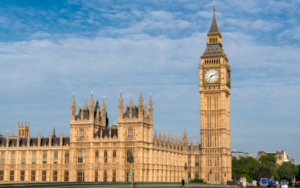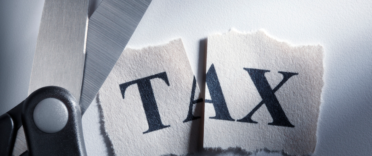
The Class 1 changes will affect most employed workers in the UK, expected to be around 27 million people. Class 2 and Class 4 changes will be less far reaching, affecting around two million self-employed people.
Any tax-cut celebrations were cut short by OBR (Office for Budget Responsibility) forecasts showing that taxes could reach a post-war record of 37.7% by the 2028/29 tax year under current plans. This is because tax thresholds have remained unchanged as wages have risen, increasing tax revenues – a concept known as fiscal drag. This means that workers continue to pay more tax, despite headline cuts. Listen to podcast episode 438 where Damien explains fiscal drag in more detail.
Why has National Insurance changed?
The National Insurance contributions that you pay are a tax on employed earnings as well as the profits made by the self-employed. They form part of the calculation that works out your entitlement to benefits including the State Pension, but otherwise work much like income tax. Class 1 National Insurance is currently charged at 12% of your employed earnings between £1,048 and £4,189 a month, then 2% on everything over £4,189 a month. Class 2 National Insurance, which is being abolished for the self-employed, is £3.45 a week. Class 4 National Insurance is charged to self-employed workers at 9% on annual profits between £12,570 and £50,270 and 2% on profits over £50,270.
During his statement to the House of Commons, the Chancellor declared that the UK economy was “back on track”, but more was required to reward and motivate workers. Having previously committed to freezing tax thresholds until 2028, Hunt has instead turned his attention to National Insurance in order to cut the tax burden from its 70-year high. It is also not uncommon for governments to look to offer tax cuts in the lead-up to a general election, which is expected in 2024.
What do the National Insurance cuts mean for you?
Paying less National Insurance will mean more money in your pocket each month. How much you save will depend on how much you earn and whether or not you are self-employed. The tables below reveal how much you can expect your pay to change from 6 January 2023.
Changes to National Insurance if you are employed
The table below applies to employees paid a regular salary who will be affected by the Class 1 National Insurance cut from 12% to 10%.
| Annual salary before tax | Take-home pay increase per month |
| £20,000 | £12.37 |
| £25,000 | £20.71 |
| £30,000 | £29.04 |
| £35,000 | £37.37 |
| £40,000 | £45.71 |
| £45,000 | £54.04 |
| £50,000 | £62.37 |
| £55,000 | £62.82 |
| £60,000 | £62.82 |
You may notice that the take-home pay increase freezes at £62.82 in this table. This is because once your monthly salary passes £4,189, which is equivalent to an annual salary of £50,268, the rest of that month's earnings are charged at 2%. As the higher rate is not changing, the benefit of the lower rate being reduced is capped.
Changes to National Insurance if you are self-employed
The table below applies to self-employed workers who will be affected by the scrapping of Class 2 National Insurance contributions and Class 4 National Insurance dropping from 9% to 8%.
| Annual profit before tax | Take-home pay increase per month |
| £20,000 | £22.47 |
| £25,000 | £26.64 |
| £30,000 | £30.81 |
| £35,000 | £35.51 |
| £40,000 | £39.14 |
| £45,000 | £43.31 |
| £50,000 | £47.47 |
| £55,000 | £48.40 |
| £60,000 | £49.33 |
Will there be more tax cuts in the future
There have been predictions that the National Insurance cuts taking effect in January will be followed by an income tax cut in the 2024 Budget. However, much will depend on the effect of the Autumn Statement changes on inflation and the popularity of the government.
If inflation does not continue to drop towards the Bank of England’s target of 2%, tax cuts announced in the run-up to Christmas could be viewed as a costly mistake that needs to be swiftly reversed. On the other hand, if public confidence in the government picks up on the back of lower inflation and falling taxes, a change to income tax rates or thresholds could be on the horizon.






